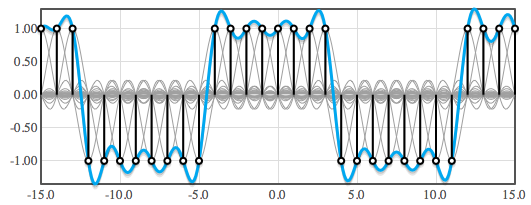I was Googling for how Google Music handles lossless audio and amidst the search results my eyes focused on this article.
Having read it I'm now more aware of the misconceptions people make (myself included) and will no doubt have this in mind when getting new music.
The TL;DR version is explained in this extract:
So what do you guys think of this? I have several albums in 24/96 and my DAC/Amp supports that over Asynchronous USB. Maybe I should drop the output from Windows to 16bit and 44.1 or 48KHz with this new knowledge in mind considering the bulk of my music is 16/44.1 anyway.
Think a re-read in the evening is in order as some of it went over my head as well this morning
Having read it I'm now more aware of the misconceptions people make (myself included) and will no doubt have this in mind when getting new music.
The TL;DR version is explained in this extract:
Unfortunately, there is no point to distributing music in 24-bit/192kHz format. Its playback fidelity is slightly inferior to 16/44.1 or 16/48, and it takes up 6 times the space.
There are a few real problems with the audio quality and 'experience' of digitally distributed music today. 24/192 solves none of them. While everyone fixates on 24/192 as a magic bullet, we're not going to see any actual improvement.
...
The ear hears via hair cells that sit on the resonant basilar membrane in the cochlea. Each hair cell is effectively tuned to a narrow frequency band determined by its position on the membrane. Sensitivity peaks in the middle of the band and falls off to either side in a lopsided cone shape overlapping the bands of other nearby hair cells. A sound is inaudible if there are no hair cells tuned to hear it.
It's worth mentioning briefly that the ear's S/N ratio is smaller than its absolute dynamic range. Within a given critical band, typical S/N is estimated to only be about 30dB. Relative S/N does not reach the full dynamic range even when considering widely spaced bands. This assures that linear 16 bit PCM offers higher resolution than is actually required.
It is also worth mentioning that increasing the bit depth of the audio representation from 16 to 24 bits does not increase the perceptible resolution or 'fineness' of the audio. It only increases the dynamic range, the range between the softest possible and the loudest possible sound, by lowering the noise floor. However, a 16-bit noise floor is already below what we can hear.
...
16 bits is enough to store all we can hear, and will be enough forever.
So what do you guys think of this? I have several albums in 24/96 and my DAC/Amp supports that over Asynchronous USB. Maybe I should drop the output from Windows to 16bit and 44.1 or 48KHz with this new knowledge in mind considering the bulk of my music is 16/44.1 anyway.
Think a re-read in the evening is in order as some of it went over my head as well this morning

Last edited:









